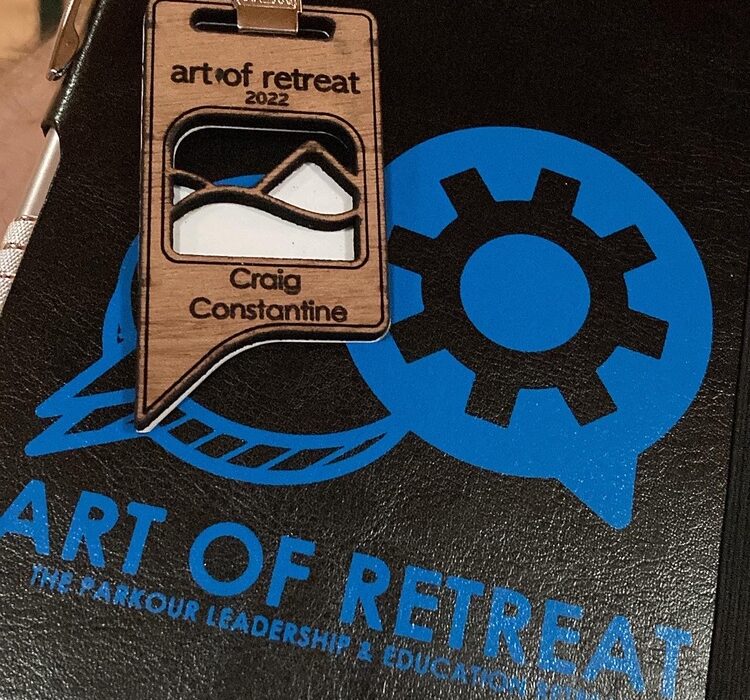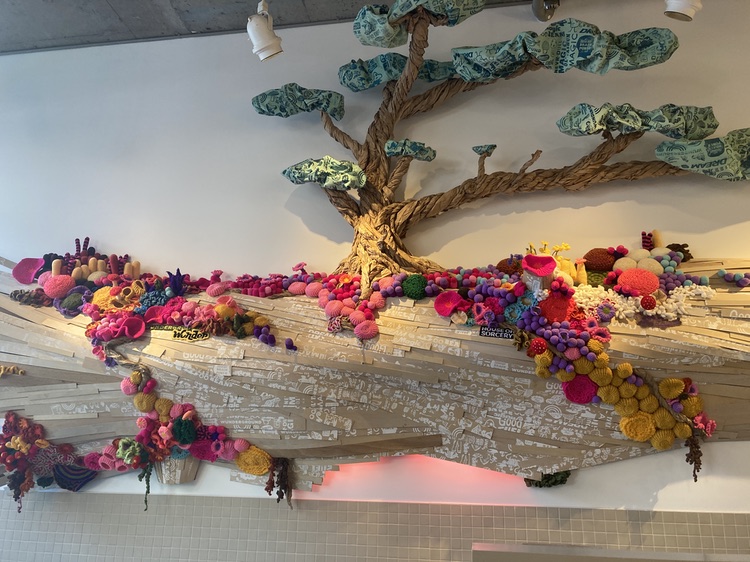What is not clear should be cleared up. What is not easy to do should be done with great persistence.
~ Confucius
slip:4a1029.
What is not clear should be cleared up. What is not easy to do should be done with great persistence.
~ Confucius
slip:4a1029.
If you talk to someone about “relaxing,” they will usually think of that as the opposite of “trying hard.” They think of lying on the couch, muscles relaxed, not doing anything. “Relaxing” is equated with “laziness” for a lot of people. So “trying hard” and “relaxing” are seen as two opposite things. What would it be like to try hard while relaxing?
~ Leo Babauta from, Effortless Effort: Relaxing While Trying Hard – Zen Habits Website
slip:4uzeda1.
I’ve long known I have a bias to action. So trying hard used to always look like activity—often physically strenuous activity. Eventually I came to refer to that as my “bashing” mode. Imagine the Hulk working on anything; Bashing. But this leaves a trail of destruction more often than not. As I’ve worked to value recovery, rest, and relaxation—because, hey, why couldn’t one’s life be mostly peaceful relaxation?—I’ve gravitated towards “work” that can be done in a relaxed state. If any of this is news to you, as always, Babauta does a great job suggesting ways to get into it.
ɕ
There are no laws. You have to be in the moment. You have to understand the circumstances you’re in. Learning to adapt to each new circumstance means seeing events through your own eyes, and often ignoring the advice that people constantly peddle your way. It means that ultimately you must throw out the laws that others preach, and the books they write to tell you what to do, and the sage advice of the elder.
~ Robert Greene
slip:4a1028.
Whenever I hear about these incidents, I think of the best life advice I ever got, from my older brother: “Don’t freak out.” He was giving me a parenting tip, but really, it applies to everything in life. Freaking out—“emotional flooding,” in social-science jargon—never seems to make matters better, and we nearly always regret it. The fact that freak-outs may be happening with particular frequency right now is an opportunity to understand the phenomenon in ourselves and learn to manage our emotions better. If we do, we will be equipped with a skill that helps us be better friends, parents, spouses, and professionals, even when the pandemic is nothing but a distant memory.
~ Arthur C. Brooks from, How to Stop Freaking Out – The Atlantic
slip:4utefa4.
I truly hope you’ve not experienced flooded emotions, recently or otherwise. For me, this is a big part of how my atypical brain works. I don’t have an emotional range. I have two settings labeled zero and eleven. Eleven means I love sappy movies, can get really engaged in helping people, and much more. But, I had to learn how to disengage when my emotions flare; I had to become a master at pausing while deciding what I want to happen.
But having a level–zero non-response to most everything means I can function very well under duress. For example, if the roof of the house is mid-repair, it’s been raining hard for hours, the ceiling is leaking in various places, and then the hard-wired fire alarm shorts out (ie, goes off) when water gets into a sensor, the deafening, in–house klaxon sounds, my cellphone rings as the monitoring company reports there’s a fire… Well, level-zero means I can repeatedly work the keypad to disable the fire alarm, even though it goes off again in a few seconds, give the person on my cellphone my alarm code to avert the fire department’s being dispatched, and then quickly work to physically disable the alarm system (even though it’s intentionally tamper– and disable–resistant.) All without my heart–rate rising; while actually feeling bored by it all.
ɕ
Reading time: About 4 minutes, 700 words
Get 7 for Sunday in your inbox. → Subscribe here.
This issue is https://7forsunday.com/2
The Great Lakes of North America’s midsection—Superior, Michigan, Huron, Erie, and Ontario—together span nearly 100,000 square miles, with a combined coastline just shy of 10,000 miles. They hold more than a fifth of Earth’s unfrozen fresh water, straddle an international border, and help move more than $15 billion dollars worth of cargo each year.
~ Gemma Tarlach from, Are the Great Lakes Really Inland Seas? – Atlas Obscura
slip:4uaaai8.
This article didn’t strike me as particularly interesting. But after I was about half–way through reading it, it became clear it was in fact interesting. It’s worth the read. It’s worth read just to find out was a “meteotsunami” is. It’s worth read to learn about that time the water in Lake Michigan sloshed to one side and then sloshed back creating a tsunami that swept into Chic– wait, wat?!
ɕ
You should be brave enough to use your own intellect, in life and in your education.
~ Immanuel Kant
slip:4a1027.
Inside this box is a thing of beauty—and absurdity. It’s a one-of-a-kind puzzle created just for me by one of the greatest puzzle makers in the world. It is, almost surely, the hardest puzzle ever to exist. But before I open the box, let me tell you how the puzzle came to be, and why I think it’s not a trivial pursuit.
~ A. J. Jacobs from, The Puzzle That Will Outlast the World – The Atlantic
slip:4utete5.
There was a time… who am I kidding? The time is now. Must. Resist. The urge. To buy…
ɕ
People are wise beings; they possess the ability to live according to the dictates of their intellect, and sooner or later, they will evolve from a state of violence to a state of complete harmony and understanding. And every act of violence makes this time more distant from today.
~ Leo Tolstoy
slip:4a1026.
Modern wellness, at its core, is a self-sustaining doom loop of precautionary, aspirational consumption: Buy to be better to buy more to be better still. Which is why, despite Raphael’s arguments, I don’t fully buy that wellness has taken on the role of religion. Instead, in classically entrepreneurial American fashion, it’s become extra unpaid work—the very thing we don’t need more of and truly don’t have time for.
~ Sophie Gilbert from, How Did Healing Ourselves Get So Exhausting? – The Atlantic
slip:4utecu1.
I’d never really thought of it as “exhausting” until I read this article. Now I’m thinking that what I’ve been rebelling against, in the last year or three, is my self–imposed, continuous–improvement mindset of wellness. What I really want to do, is nothing; literally nothing in the sense of just lay in a hammock for—I dunno—a week, maybe much much longer. I’d thought, again in the last year or three, that I’d insulated myself from the outside effects Gilbert describes so clearly, but now I’m not so sure. I’m definitely way down the downward–slope side of spending money on “wellness.” But I’m definitely aware that I spend a lot of time thinking about, arranging, tweaking, planning, assessing… around wellness. Food for thought, indeed.
ɕ
Look for the truth; it wants to be found.
~ Blaise Pascal
slip:4a1025.

For several years I’ve been attending the Art of Retreat events in North America. Originally they were held in New York City, but the latest three were held outside of Seattle. I’ve been recording conversations for Art of Retreat’s own podcast over the years. If you’re interested in what goes on behind the scenes, I tried to unpack some of it over on a topic in the Podcaster Community, Field Recordings at Art of Retreat 2022.
I have a habit of trying to capture interesting photos from airplane windows. Often it’s solar or weather phenomenon, but on this trip out to Seattle I was surprised to see these forest fires. Fortunately, they weren’t very close to where the event was held, but “fire fog” was thing during much of the time I spent in Seattle and all of the time at the event.



A few shots from the location where the event was held…



And one last random shot from a cool, mushroom–infused coffee spot in Seattle, Wundergrond Coffee.

Random, but fun photos — hope you enjoyed them.
ɕ
Reading time: About 4 minutes, 900 words
Get 7 for Sunday in your inbox. → Subscribe here.
This issue is https://7forsunday.com/1
The more fun your work, the less likely it is to set off these triggers. You won’t struggle to focus—tasks will attract your attention because they’ll be far less tedious, frustrating, challenging, and so on. There are a lot of strategies for overcoming procrastination. But making a project more fun disables a bunch of procrastination triggers at once, while also making your work more enjoyable. It’s a great strategy.
~ Chris Bailey from, How to stop procrastinating by making your work more fun – Chris Bailey
slip:4uciho3.
Great little article from Bailey with great points about the really common things that trigger procrastination, and some ideas on how to beat each one. What’s been working for me for a while is something inspired by Yoda’s comment that, “named your fear must be, before banish it you can.” I can tell when I’m procrastinating; perhaps not always, but definitely often. At the point of realization, I play the name–game: “Craig, what exactly is it that you don’t want to do?” Then like the school guidance counselor always trying to talk me out of sabotaging myself into detention, “Are you sure that’s the thing? Be specific.” Upon realizing I’m still in their office, “I don’t think you’re as sure as you think you are. Can you explain it to me like I’m 5 years old?” Until eventually, it’s so blinding clear what I need to do (or skip, or change, or screw up 3 minutes of courage, or whatever) that I just freaking stomp that procrastination.
ɕ
When circumstances scare us, our imagination tends to take over, filling our minds with endless anxieties. You need to gain control of your imagination. A Focused mind has no room for anxiety or for the effects of an overactive imagination.
~ Robert Greene
slip:4a1024.
In the military they speak of sleep discipline–meaning it’s something you have to be good at, you have to be conscious of, something you can’t let slip. We only have so much energy for our work, for our relationships, for ourselves. A smart person knows this and guards it carefully. A smart person knows that getting their 7-8 hours of sleep every night does not negatively affect their output, it contributes crucially to their best work.
~ Ryan Holiday from, Here’s Your Secret To Success: Go The F*ck To Sleep – RyanHoliday.net
slip:4urygo1.
Sleep. sleep sleep sleep sleep sleep sleep sleep sleep sleep sleep sleep sleep sleep sleep sleep sleep sleep sleep sleep sleep sleep sleep sleep sleep sleep sleep. Sleep? Sleep!
Know that old trope about if you could go back and tell yourself something, or send yourself a letter? …and most people—including me!—say something like: No I wouldn’t because I’d not be who I am now without those mistakes! Yeah no ima take that back. Note to past self: Yo! Go the f*<k to sleep.
And maybe… just sayin’ spitballin’ here… try gettin’ up early if you really want to jump back on whatever it is you think it’s worth staying up for tonight… ¯\_(ツ)_/¯ what do I know.
ɕ
You only need that lesson once. That wasn’t the standard, and you know what the standard is. Hold the standard. Ask for help. Fix it. Do whatever’s necessary. But don’t cheat.
~ Chris Young
slip:4a1023.
Play is a big part of our lives as children, but why do we lose our playfulness as we age? I talk a lot about the emotional and physical aspects of play, especially regarding Positive Ageing and aspects of Parkour. So many people feel like play is out of reach as they approach midlife, even though it’s an innate part of you.
~ Julie Angel from, Discovering the power of play in midlife. – Julie Angel PhD
slip:4ujudi1.
Angel doesn’t write often, but when she does it’s something nice like this. I just want to say that physical movement and play are inseparable—without the former, you’re not really doing the later.
Or, perhaps I just want to say two things; That first thing, and that Angel is the film–maker who created my favorite video to share when people ask me, “what is parkour?” Movement of Three.
Actually, I want to share three things: Those two things, and Julie if you’re reading: OMG the cannoli!
ɕ
The way to true knowledge does not go through soft grass covered with flowers. To find it, a person must climb steep mountains.
~ John Ruskin
slip:4a1022.
We are well aware that structures such as buildings and organizational policies and operating processes support and constrain our activities. We tend to be much less conscious of smaller structures that influence our interactions with other people. In contrast to more tangible macrostructures, we call them microstructures. You have no choice. Every time you have a conversation or a meeting you are using microstructures.
~ Keith McCandless from, Liberating Structures – Microstructures & Design Elements
slip:4ulide1.
Once you see the solutions, you can’t unsee them. You—like me—probably think you do a good job of engaging other people. But there’s a great explanation in this little introductory article. It listed off all the ways… ways for which I was congratulating myself knowing… in which the microstructures we use today fail. And then it goes on (in brief in the article and at length through that web site, and a book) to show some beautiful ways to create and use structures which liberate us. That’s rather nice.
ɕ